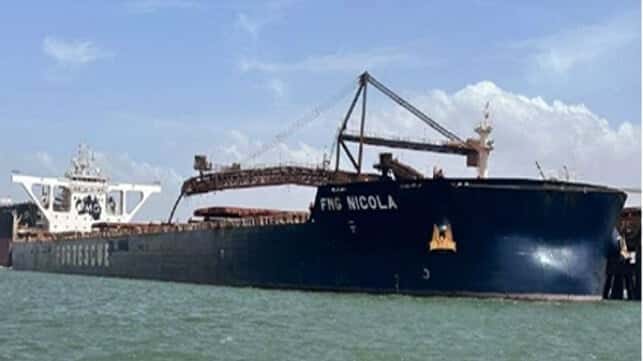Australia Reports on Bulker’s Engine Shut Down in Busy Port Hedland
Near Disaster Averted at Port Hedland

The Australian Transport Safety Bureau (ATSB) has released an interim report detailing a critical incident involving the bulk carrier FMG Nicola at Port Hedland, Western Australia. In February, the vessel lost propulsion shortly after departing, nearly causing a significant blockade in one of the world’s busiest shipping channels. Quick action from tugs and the pilot on board prevented what could have been a major disruption to global shipping operations.
Incident Overview and Response
On February 7, the 327-meter Singapore-flagged FMG Nicola, operated by Fortescue Metals Group, was fully loaded with over 237,000 tonnes of iron ore and prepared to depart for Dongjiakou, China. The ship’s main engine unexpectedly shut down due to a faulty switch that monitored the lubricating oil pressure. This malfunction occurred while the vessel was navigating the narrow, tidal channel leading out of Port Hedland, which is the largest bulk export port in the world by tonnage.
At 1412 local time, the ship began its journey, but by 1516, it had lost propulsion while traveling at a speed of 8.3 knots. The pilot immediately alerted the tug masters, who were crucial in maintaining the vessel’s position within the channel. Fortunately, two tugs were already secured to the ship, with a third nearby, allowing for a coordinated response to keep the vessel from grounding.
According to ATSB Chief Commissioner Angus Mitchell, the potential consequences of a disabled ship in this channel could have been severe. “A disabled ship can strand on a receding tide as well as blocking the passage of other ships,” he stated. The channel is only wide enough for one large ship at a time, and the incident could have impacted multiple vessels if not for the swift actions taken by the crew and tugs.
DNV launches guide to implementing ERA rail safety and risk management recommendations
Investigation Findings and Future Steps
The interim report highlights that the engine shutdown was triggered by a non-cancellable trip due to low lubricating oil pressure, caused by the faulty pressure switch. After the incident, engineers confirmed that all engine systems were functioning normally, allowing them to reset the engine trip lockout system. By 1523, the engine was restarted, and the ship was gradually moved away from the channel’s edge, resuming its journey to China.
Remarkably, no damage or injuries were reported during the incident, underscoring the effectiveness of the emergency response. The ATSB is continuing its investigation and will release a final report detailing comprehensive analysis and findings once the inquiry concludes. This incident serves as a reminder of the critical importance of safety protocols in maritime operations, especially in busy shipping lanes like those at Port Hedland.
